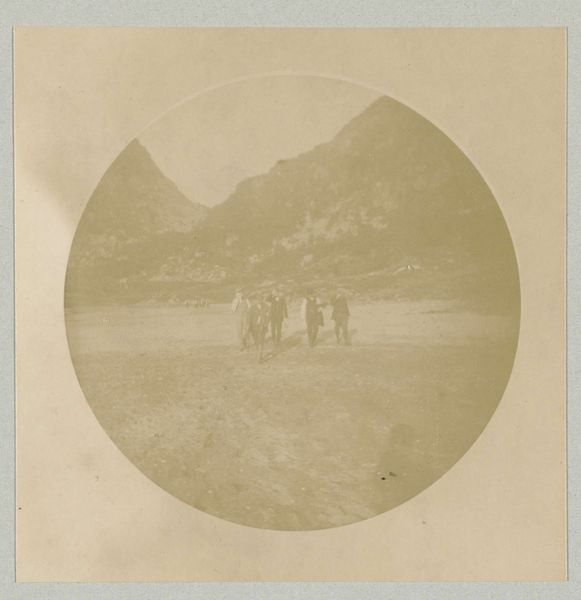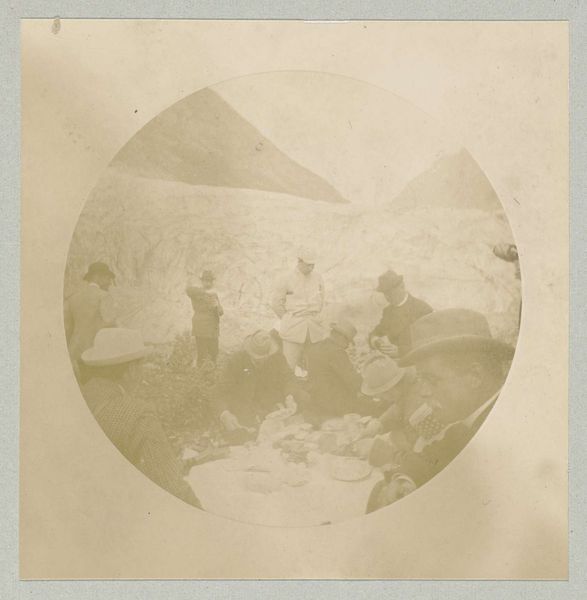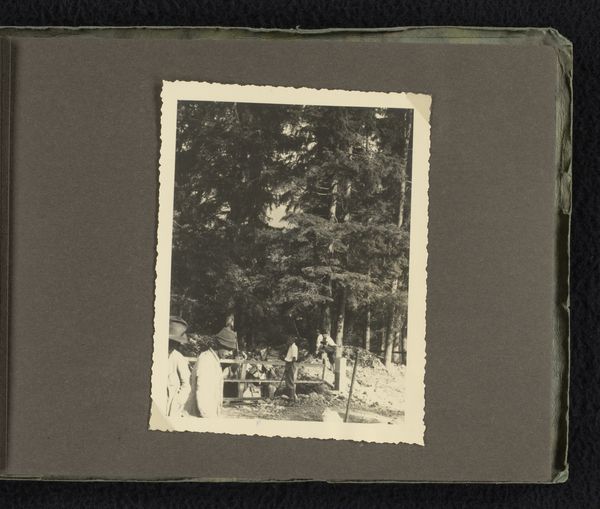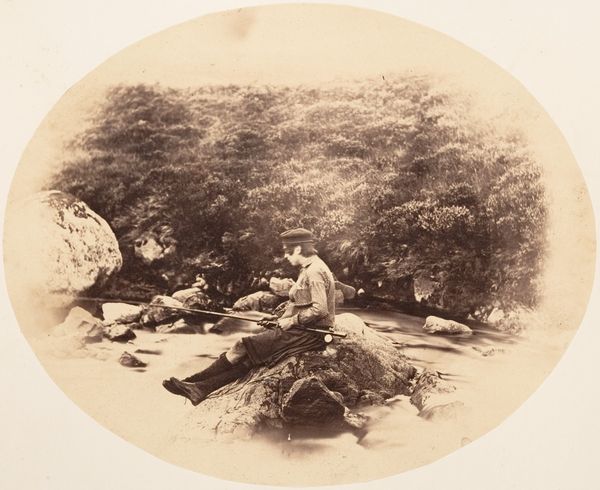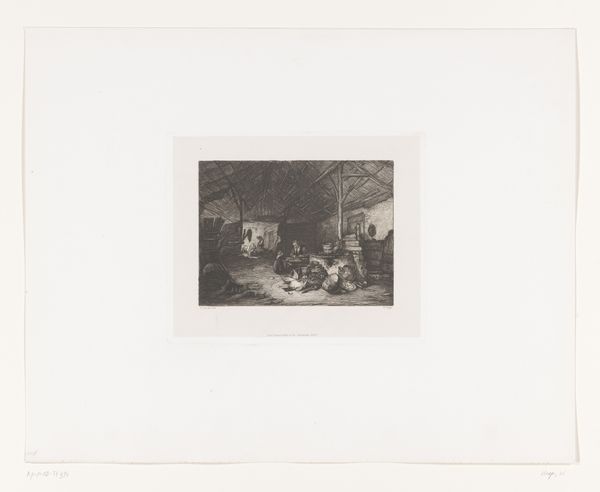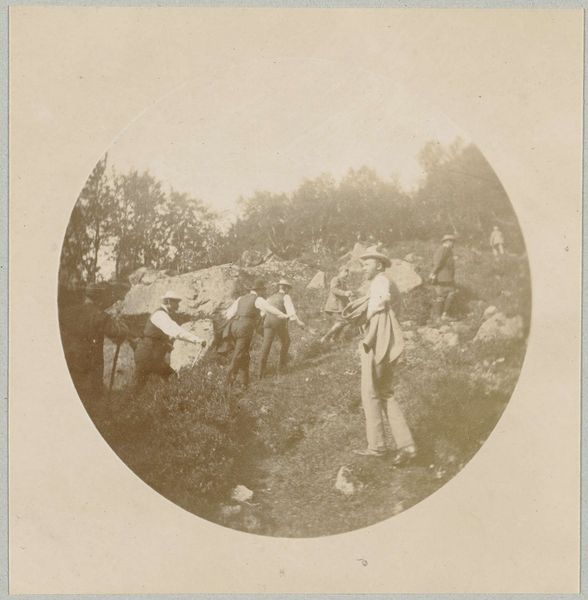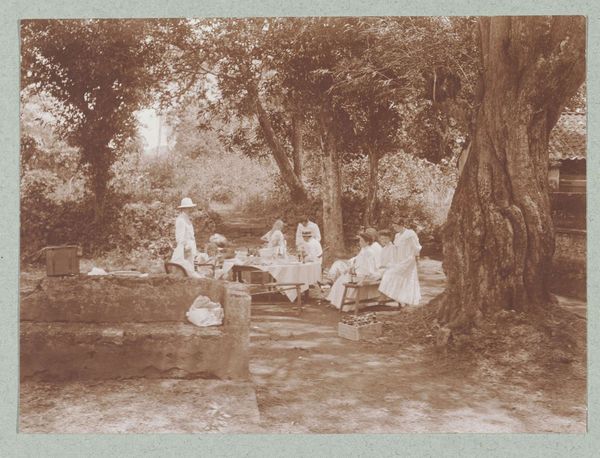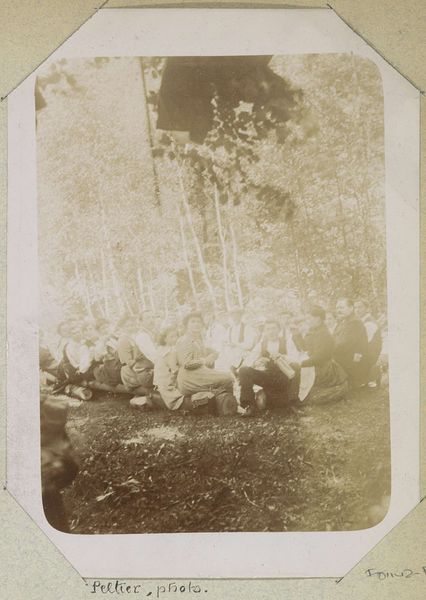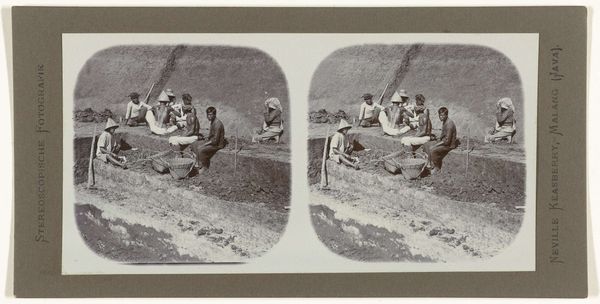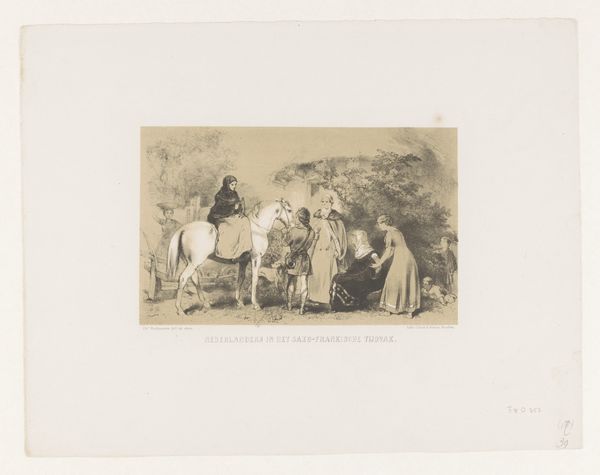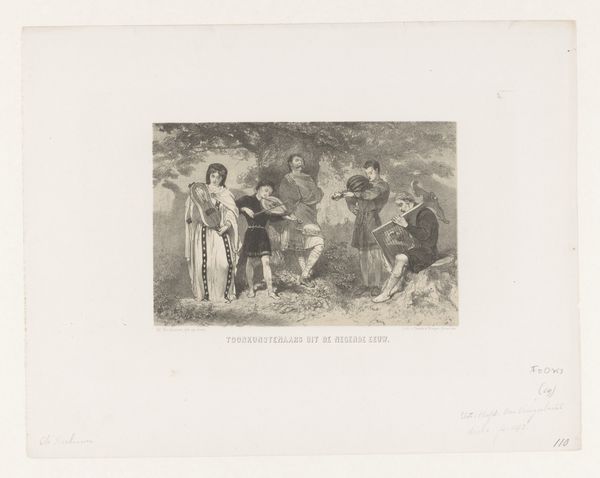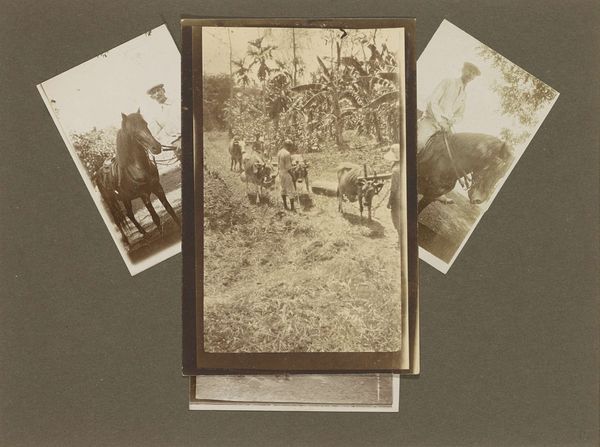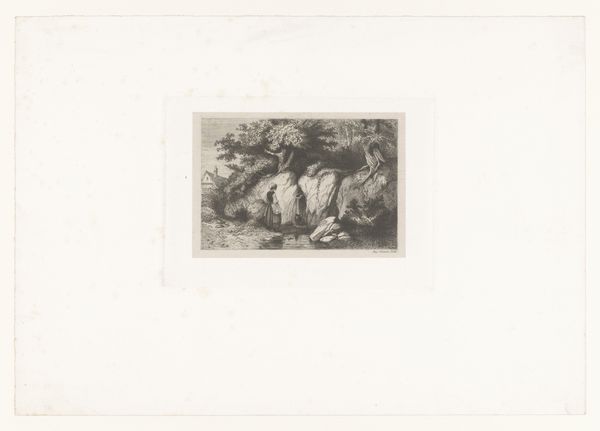
photography
#
portrait
#
pictorialism
#
landscape
#
photography
#
realism
Dimensions: height 72 mm, width 72 mm, height 314 mm, width 450 mm
Copyright: Rijks Museum: Open Domain
Curator: Looking at this photograph, I am immediately struck by a sense of antiquated formality. It almost feels like a stage tableau. Editor: Exactly. It's an 1889 photograph by Paul Güssfeldt titled "The company of Emperor Wilhelm II in the Norwegian mountain landscape." It gives us a glimpse into Wilhelm's orchestrated public persona. Curator: Güssfeldt situates Wilhelm, centered among what looks like his entourage, in a vast and rugged terrain, playing on the trope of man conquering nature. But this goes further, doesn't it, highlighting the gendered nature of such displays of dominance and the performative aspects of imperial authority? Editor: Absolutely. The photograph uses a pictorial style rooted in realism, presenting itself as a straightforward record, yet subtly reinforces Wilhelmine ideology. The very act of commissioning the photograph suggests how imagery and visual spectacle were used to project power. Curator: What stands out is the use of light. Despite being outdoors, there is this sense of posed studio lighting highlighting Wilhelm at the very heart. But let's think about who’s present in the image. Is there representation from different societal stratifications, perhaps indicating the expansionist tendencies during the New Imperialism age, or are we witnessing just a cohort of powerful men? Editor: It is mainly a homogeneous group – advisors, military figures – carefully selected to underscore Wilhelm's leadership. But also, how this image was reproduced, circulated in various publications. These controlled visual representations reinforced the idea of an invincible leader connected to the raw power of nature. Curator: How can we interpret its social value then, when juxtaposed against our awareness of the globalized politics of our current age? I'm concerned with what a contemporary viewer makes of such imagery, knowing that history isn’t so easily encapsulated and understood. Editor: In today's context, such a constructed display is immediately critiqued and historicized, right? What appeared self-evident as a portrayal of benevolent authority a century ago now triggers questioning of power dynamics, manufactured narratives, and the use of photography as a tool for control. Curator: Agreed. Thinking through the gender and racial aspects, such images become valuable in highlighting the critical ways in which power continues to assert itself. Editor: Well, this photograph certainly provides layers of sociopolitical understanding for the power that exists. It also prompts us to interrogate our roles as the present recipients.
Comments
No comments
Be the first to comment and join the conversation on the ultimate creative platform.
